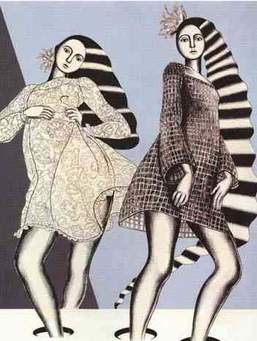514.223.5327
MAKE AN APPOINTMENTCauses of Poor Body Image
In earlier blogs we have identified indicators of poor body image, the alarming statistics that reveal how many people are struggling with this problem and its negative impact on our health. The following will summarize what we have learned about the causes of poor body image.
The earliest influence on body image is our family. For the first few years of life we are in the constant presence of our family and what we hear and see in the context influences our beliefs, values and attitudes. Parents are often unaware of the tremendous impact of their words and behavior on the child’s development of their sense of self. Think about how we comment about children’s behaviour and their appearance. We praise boys for being “big and strong” or we praise girls for being “pretty and sweet”. And many parents comment on their child’s weight encouraging them to “slim down”. The impact of this worsens if we tease children about their bodies whether this is about their weight or their sexual development (e.g., developing breasts or voice changes at puberty). In doing so we increase the likelihood of them developing a dislike and shameful feelings towards their body.
In addition, parent’s modeling of preoccupation with weight has an impact. Think about what children hear us say about ourselves: “ugh, I look so fat”, “I have to lose 10 pounds before the wedding”. Parents who routinely diet and avoid being in a bathing suit for example model this as normal behaviour and then their children learn that weight is something to worry about. Children listen to and observe all of this and it shapes their beliefs and attitudes towards themselves. By the age of two children have developed a sense of their body. The body represents the boundary between what is me and what is not me. More and more the body begins to represent who we are in our own eyes and in the eyes of others. The family powerfully shapes this developing perception and this can either buffer children from or establish fertile soil for future damaging influences.
Teasing is a big problem. When children repeatedly receive negative comments about themselves – they believe them. Many people with poor body image report that teasing began in early childhood but peer influences peak during adolescence when belonging to a social group increases in importance. Being excluded from social groups because of how they look or what they wear further reinforces prevailing beauty ideals. We find that how teens look is more important to them than their performance at school. Another influence during the teen years is growth. It is normal to go through weight spurts and height spurts during adolescence as their body matures. Unfortunately we tend to react to weight spurts with fear as do the teens themselves. And the major dilemma is that this occurs at exactly at the same time as their self-consciousness about fitting in with their peers peaks.
And where do these beauty ideals that parents and peers insidiously promote come from? Like adults our youth are subjected to representations of the “ideal” via images on television, magazines, movies, the internet and music videos. Everywhere we look we see young, big-breasted, long legged women who are unbelievably thin. If we see a man in the media with his shirt off, he is invariably lean, muscular, hairless and young.
Preschool children have already started to learn how society views various physical characteristics. Children know that Cinderella wins the handsome prince and the ‘ugly’ and mean step-sisters lose out. They know that Barbie, Ariel or Briar Rose have the good life with bodies to match. This is also true for boys with the modern equivalents of Ken dolls or GI Joe. Body image takes shape as children absorb conceptions of what is valued as attractive – how they should look. They also learn what characteristics are unattractive – how they should not look. More importantly they judge their own body in how it lives up to these “shoulds”. The result affects their self-worth.
As adults we are increasingly exposed to images of the ideal woman who has a full time career, happy children and a thin but fit body – all of which are very difficult to attain and balance. Men also experience these kinds of pressures to be tall, muscular with a full head of hair as well as being expected to provide material signs of success (the car, watch, tech accessories…) All of us are subjected to growing pressures to be physically attractive and we increasingly believe that good looks are a prerequisite for succeeding in relationships and life in general.
As mentioned earlier our image of ourselves is already taking shape at age 2. Once we develop beliefs and attitudes about ourselves – they are resistant to change. Whether we learned negative ideas about our bodies and ourselves within our family context or via teasing from our peers or through influences of the media – they stick. Studies done on people dissatisfied with their appearance – whether this was due to their weight or acne for example – still believe this about themselves even when they are no longer overweight or when the scars from acne have disappeared. Body image is very much the consequence of cultural and interpersonal conditioning.
As pervasive as these beliefs and attitudes may be, we can change them. Please read the next blog in this series on body image in which we will discuss what we can do to improve body image. If you are suffering with your Body Image, call us to set up an individual session with one of our therapists. We can help you find peace with your body.
Written by: Shawna Atkins, Ph.D., OPQ

